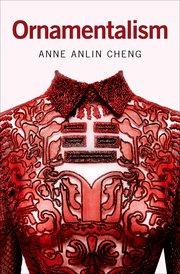Anne Anlin Cheng ’85 on Asiatic Femininity
The book: In Ornamentalism (Oxford University Press), Anne Anlin Cheng ’85 offers a feminist theory of “the yellow woman,” filling an absence in critical race theory on Asiatic femininity. Through the use of legal, cinematic, and art history Cheng argues that ornamentality, rather than Orientalism, provides a better explanation for the representation of Asian women in the West from the 19th through 21st centuries.
By illustrating the link between Asiatic femininity and a technological history of synthetic personhood, Cheng provides an entirely new approach to the problems of racial and sexual commodification and objectification. Cheng then extends her study to its implications for all women of color.

Opening lines: Is there room in the dehumanizing history of race to talk about a figure whose survival is secured through crushing objecthood?
This study argues there is a distinct kind of human figure whose endurance and enchantment entail a fusion between synthetic objecthood and organic personhood in ways that demand a fundamental reconceptualization of what Frantz Fanon has named the “racial epidermal schema.” Our principal, though not exclusive, case study for this human formation—ornamental, at once abstract and material, embodied and disembodied—will be the yellow woman. This designation is not meant to essentialize but to name the process of radicalization, with all their historic and living force, that adhere to the Asian/American woman in American culture. The term yellow woman denotes a person but connotes a style, promising yet supplanting skin and flesh, an insistently aesthetic presence that is prized and despoiled. The particularity of this kind of object-person who is radically undone yet luminously constructed — that is, meticulously and aesthetically composed yet degraded and disposable — troubles some of our deeply held, politically cherished notions of agency, racial embodiment, subjecthood, and ontology.
Reviews: "Through a constellation of mesmerizing scenes — from the courtroom to the museum to the sushi bar, from early photographs to cyberfiction film — Anne Anlin Cheng reveals the drama of ornamentalism in Anglo-American culture: the ontological force with which Asiatic femininity resides in an aesthetic of ornamental personhood. Within the dynamics of this drama — conflating the abstract and the corporeal, the figural and the real — personhood and objecthood ineluctably converge. Above all Ornamentalism tracks new and essential questions for the study of racialized gender." –Bill Brown, University of Chicago












No responses yet